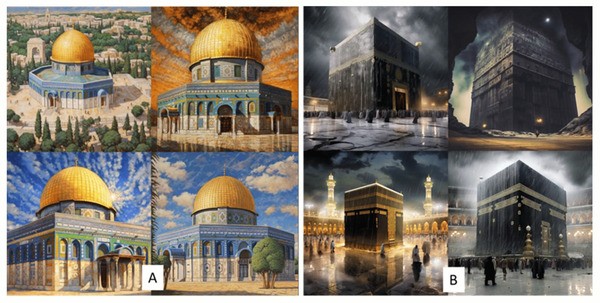However, in a field in culture, philosophy, and religion, such as Islamic architecture, AI-generated descriptions often fail to provide a proper understanding of the historical aspects of Islam and their interpretation, according to research published in Architecture magazine.
"In recent years, the widespread adoption of intelligent image generators such as static and mid-range rendering has revolutionized the architectural design process," said scientist Ahmad W. Sukkar. , Ph.D., lead author of the muscle building and imagination study. design.
However, despite the potential of AI to generate innovative design results, "many examples found online show the limitations of limited prior knowledge and the shortcomings of the datasets used by the Author AI. In a cultural and historical context such as Islamic architecture, the introduction of AI technology should be carefully considered.
AI models such as Stable Diffusion and Midjourney are said to be adept at creating artistic and architectural images and designs, with high-quality detail and texture, in addition to creating realistic animations and visuals. They help artists and designers to create unique photographic images based on text and image symbols.
The authors agree that AI tools can produce designs inspired by traditional Islamic architecture, but believe that the combination of AI and Islamic architecture presents both opportunities and challenges for producer.
They wrote: "AI image generators can be an important tool in the Islamic design process; however, they should be used with caution. Although AI can provide new and exciting opportunities, it should be human expertise and supported by deep knowledge. “In this context, the human touch, artistry and attention to the principles of architecture must be maintained and not forgotten. Striking the balance is essential, and artificial intelligence can be a powerful tool to enhance human creativity, but it cannot completely replace it. .
"Images created by artificial intelligence may not capture intangible aspects of heritage, such as cultural practices, rituals, or oral traditions, because they are beyond the understanding of the thoughts and symptoms. At the current stage of development, it is difficult for artificial intelligence to capture these features. fully grasp the depth of these elements. Complex and simple, often related to personal experience and subjective experience.
Regarding the focus of their research, Sukkar said: "Our research explores the exciting relationship between artificial intelligence (AI) and Islamic architecture, exploring how AI technology can produce image of Islamic heritage Our research has shown great potential and great limitations. "Through careful examination and comparison with historical sources, we found that many factors contributed to these differences, including limitations of the signals from which the images were produced, challenges to accurately capturing local and historical features, and intricacies in architectural features and details.








